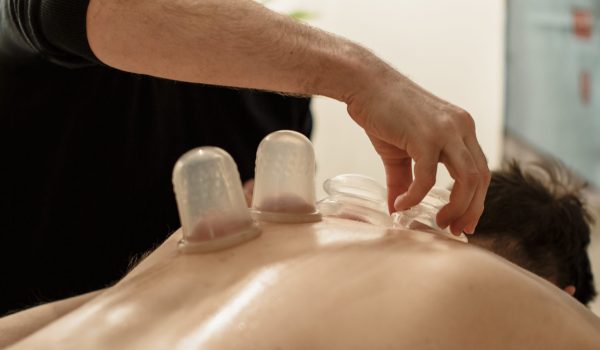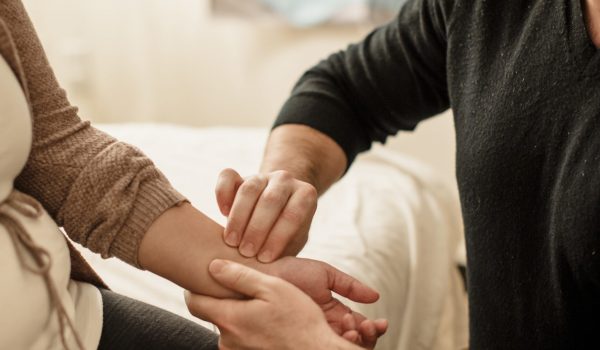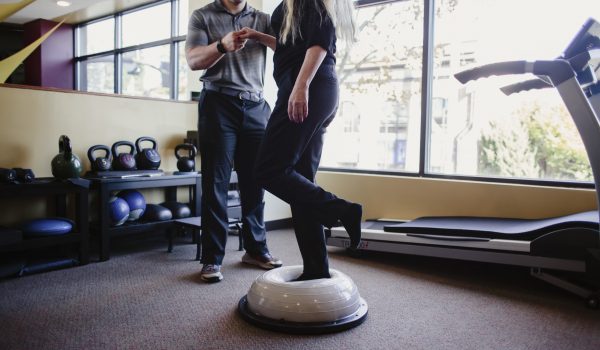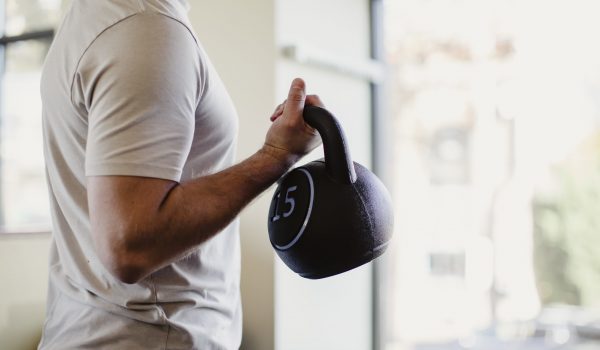Lower Body Massage Therapy in Portland – Hip, Knee & Leg Pain Relief
Therapeutic massage is a holistic approach to alleviating hip pain, knee pain, and ankle/foot pain through manual manipulation of soft tissues and muscles. It is based on the principle that targeted massage techniques can improve blood circulation, reduce muscle tension, and promote relaxation, ultimately leading to pain relief and improved mobility in the affected areas.
Massage can help reduce swelling, improve blood flow, and alleviate discomfort, making it beneficial for both acute and chronic foot and ankle conditions.
In all cases, a qualified massage therapist will tailor the treatment to the individual’s specific needs and medical history. Therapeutic massage is generally considered a complementary therapy and should be used in conjunction with other medical treatments like physiotherapy and rehabilitation exercises as recommended by a healthcare professional.
Regular sessions can provide ongoing pain management and improve overall quality of life for individuals experiencing hip, knee, or ankle/foot pain.
Schedule a session with an experienced massage therapist to unlock a rejuvenated, pain-free version of yourself. Your path to a healthier, more comfortable life begins with the choice to invest in your overall well-being.
Lower Body Massage
Therapy Near You
Schedule an Appointment or Walk in!
Therapy & Treatment Awaits at
Portland Wellness Care!
Meet Our Massage Therapists

Desi Hill, LMT

Madison Hubbell, LMT

Kevin Ryan, LMT, BS
Targeting Lower Body Pain, Injuries & Tension with Massage Therapy
Consider seeing a massage therapist for lower body pain if you are affected by any of the following circumstances:
Chronic Pain: If you are experiencing persistent lower body pain that lasts for more than a few days or is recurring, it may be beneficial to consult a massage therapist. Chronic pain can be caused by muscle tension, overuse, or underlying musculoskeletal issues, and massage therapy can help manage and alleviate it.
Muscle Tension and Tightness: If you have noticeable muscle tension, tightness, or knots in your lower body muscles, a massage therapist can use techniques like deep tissue massage, myofascial release, or trigger point therapy to release muscle tension and improve flexibility.
Limited Range of Motion: If you have difficulty moving your lower body joints due to stiffness or limited range of motion, massage therapy can be used to increase joint flexibility and mobility. This is especially relevant for conditions like osteoarthritis or after injuries.
Post-Injury or Surgery Recovery: After sustaining a lower body injury or undergoing surgery, massage therapy can aid in the recovery process. It can help reduce swelling, improve circulation, and alleviate pain, facilitating a faster and more effective recovery.
Sports or Physical Activity-Related Pain: Athletes or individuals who engage in physical activities may experience lower body pain due to muscle strains, sprains, or overuse. Massage therapy can be part of a comprehensive rehabilitation plan to speed up recovery and prevent future injuries.
Stress-Related Pain: Sometimes lower body pain can be exacerbated or even caused by stress and tension. Massage therapy can promote relaxation, reduce stress, and relieve associated muscle tension, leading to pain relief.
Chronic Conditions: If you have chronic conditions such as fibromyalgia or myofascial pain syndrome that cause lower body pain, massage therapy may be recommended as part of a pain management strategy.
Precautionary and Preventative Care: Regular massage therapy sessions can also serve as a preventative measure to maintain overall lower body health. By addressing minor issues before they become major problems, you can prevent the development of more severe pain or injuries.
It’s important to note that while massage therapy can be beneficial for lower body pain, it should be used in conjunction with advice and treatment from a healthcare professional, such as a physician or physical therapist. Before seeking massage therapy, consult with a healthcare provider to ensure that it is a safe and appropriate option for your specific condition. Additionally, choose a qualified and licensed massage therapist who has experience in dealing with lower body pain and related conditions.
FREE CONSULTATIONS

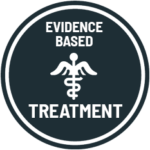


Our Insurance Partners











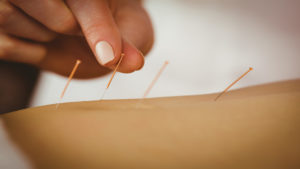
Looking for more solutions to lower body pain?
Medical Massage for Hip Pain, Knee Pain & Foot Pain
Addressing Hip Pain:
Therapeutic massage for hip pain focuses on addressing issues such as muscle imbalances, tightness, and inflammation around the hip joint. Techniques may include deep tissue massage, myofascial release, and trigger point therapy to release tension in hip muscles. Our licensed massage therapists work on the hip flexors, gluteal muscles, and surrounding connective tissues to improve flexibility and reduce pain. Regular sessions can enhance hip joint mobility and alleviate discomfort associated with conditions like hip osteoarthritis or muscle strains.
Addressing Knee Pain:
A medical massage for knee pain aims to relieve discomfort caused by conditions like knee osteoarthritis, ligament injuries, or patellar tracking issues. At Portland Wellness Care, our massage therapists use gentle kneading, friction, and stretching techniques to improve circulation and flexibility around the knee joint. Targeted work on the quadriceps, hamstrings, and calf muscles helps balance muscle tension and support knee stability. Massage therapy can reduce inflammation and promote the healing process, contributing to pain reduction and enhanced knee function.
Addressing Ankle/Foot Pain:
We are able to target ankle and foot pain by addressing common issues like plantar fasciitis, Achilles tendonitis, or ankle sprains through massage therapy. Techniques may include effleurage, deep tissue massage, and myofascial release to release tension in the calf muscles, plantar fascia, and Achilles tendon. Stretching and range-of-motion exercises may be incorporated to improve ankle and foot flexibility.
Embrace the relief, serenity, and revitalization that await you through the transformative benefits of massage therapy. Initiate your journey by scheduling a session with a proficient massage therapist dedicated to your overall wellness at Portland Wellness Care!
Targeted & Effective Lower Body Massage Therapy
Massage therapy can be helpful for various types of hip, leg and foot pain, especially when the pain is related to muscle tension, tightness, or musculoskeletal issues. Here are some common types of lower body pain that massage therapy can assist with:
Types of Hip Pain
- Muscle Tension and Tightness: Massage therapy can alleviate hip pain caused by tight or tense muscles around the hip joint. This is particularly useful for individuals who sit for extended periods, have poor posture, or engage in activities that strain the hip muscles.
- Hip Flexor Pain: Hip flexor pain is often due to overuse or strain of the muscles that allow you to lift your knee and bend at the waist. Deep tissue massage and stretching can help release tension in these muscles and reduce pain.
- Gluteal Pain: Pain in the gluteal muscles (buttocks) can radiate to the hip area. Massage therapy can target the gluteal muscles to relieve tension and discomfort.
- Piriformis Syndrome: The piriformis muscle, located in the buttocks, can compress the sciatic nerve and cause hip pain (sciatica). Massage therapy, including techniques like myofascial release and trigger point therapy, can help release the piriformis muscle and alleviate sciatic pain.
- Hip Osteoarthritis: While massage cannot cure osteoarthritis, it can help manage symptoms. Gentle massage and stretching techniques can improve circulation, reduce muscle tension, and provide temporary pain relief for individuals with hip osteoarthritis.
- Iliotibial Band (ITB) Syndrome: ITB syndrome can cause pain on the outside of the hip. Massage therapy can target the ITB, as well as the surrounding muscles, to reduce friction and tension in the area.
- Bursitis: Hip bursitis is inflammation of the bursa sac near the hip joint. While massage cannot directly treat bursitis, it can help relieve muscle tension and reduce stress on the affected area, potentially providing some relief from associated pain.
- Post-Operative Recovery: After hip surgery, massage therapy can aid in the recovery process. It can help reduce swelling, improve circulation, and alleviate muscle tension, promoting a faster and more comfortable recovery.
Types of Knee/Leg Pain
- Muscle Tension and Tightness: Massage therapy can alleviate knee and leg pain caused by tight or tense muscles. This is especially relevant for individuals who engage in activities that strain the leg muscles or have poor posture.
- Quadriceps Pain: Pain in the quadriceps (front thigh muscles) can be relieved through massage therapy. Techniques like deep tissue massage and myofascial release can help relax and release tension in these muscles.
- Hamstring Pain: Massage therapy can target the hamstrings (back thigh muscles), which are prone to tightness and strain. This can be particularly beneficial for athletes or individuals with tight hamstrings.
- Calf Pain: Pain in the calf muscles can be addressed through massage therapy. Techniques such as effleurage and deep tissue massage can help reduce muscle tension and improve circulation in the calves.
- Shin Splints: Shin splints involve pain along the shinbone (tibia) and are often related to overuse or muscle imbalances. Massage therapy can help relax the muscles in the lower leg, reducing strain on the shin.
- ITB Syndrome: Iliotibial band (ITB) syndrome can cause pain on the outside of the knee and leg. Massage therapy can target the ITB, as well as the surrounding muscles, to reduce friction and tension in the area.
- Sciatica: Sciatica is a condition in which the sciatic nerve, which runs down the back of the leg, becomes compressed, leading to pain. Massage therapy, including techniques like myofascial release and trigger point therapy, can help release muscle tension and reduce sciatic pain.
- Post-Exercise Recovery: Massage therapy can aid in post-exercise recovery for athletes or individuals who engage in strenuous physical activity. It can help reduce muscle soreness and promote faster recovery.
- Stress-Related Tension: Sometimes, knee and leg pain can be exacerbated by stress and tension. Massage therapy can promote relaxation, reduce stress, and alleviate associated muscle tension, leading to pain relief.
- Chronic Conditions: For individuals with chronic conditions like fibromyalgia or myofascial pain syndrome, massage therapy can be part of a pain management strategy to alleviate leg pain.
Types of Foot Pain
- Plantar Fasciitis: Plantar fasciitis is a common cause of heel and arch pain. Massage therapy can target the plantar fascia and calf muscles to alleviate tension and reduce pain. Techniques like deep tissue massage and myofascial release can be particularly effective.
- Achilles Tendonitis: Massage therapy can address pain and tightness in the Achilles tendon, which connects the calf muscles to the heel bone. Gentle massage and stretching can help reduce inflammation and promote healing.
- Ankle Sprains: After an ankle sprain, massage therapy can aid in the healing process by reducing swelling and improving circulation. It can also help release tension in the surrounding muscles that may be contributing to pain.
- Arch Pain: Pain in the arch of the foot, often associated with conditions like flat feet or fallen arches, can be relieved through massage. Techniques that focus on the arch muscles can help reduce pain and increase foot flexibility.
- Metatarsalgia: Metatarsalgia causes pain and inflammation in the ball of the foot. Massage therapy can alleviate discomfort by addressing muscle tension and improving blood flow in the affected area.
- Toe Pain: Pain in the toes, whether due to conditions like bunions or general discomfort, can benefit from massage. Gentle manipulation of the toes and foot can help reduce pain and improve toe mobility.
- Morton’s Neuroma: Massage therapy can provide relief for Morton’s neuroma, a condition that causes pain in the ball of the foot. Techniques that release tension in the foot’s soft tissues can help alleviate discomfort.
- Stress-Related Foot Pain: Stress and tension can contribute to foot pain. Massage therapy can promote relaxation, reduce stress, and alleviate associated muscle tension, which may provide relief from foot pain.
- Post-Exercise Recovery: Athletes or individuals who engage in physical activity may experience foot and ankle pain due to muscle strain. Massage therapy can aid in post-exercise recovery by reducing muscle soreness and improving circulation.
- Chronic Conditions: For individuals with chronic conditions like rheumatoid arthritis or peripheral neuropathy, massage therapy can be part of a pain management strategy to alleviate foot and ankle pain.
Visit our licensed massage therapist at Portland Wellness Care today! Our top-notch massages are designed to effectively address lower body pain, targeting areas from the hip to the knees and down to the foot. Don't hesitate, schedule your appointment now!
Contact Us
Any Questions? We’re here to help
Portland Wellness Care
4160 NE Sandy Blvd Suite 1100. Portland, OR 97212
Call Us: (971) 379-2455
Fax Us: (503) 477-9958
E-Mail Us: contact@portlandwellnesscare.com
Open Hours
-
Monday 8 AM - 5 PM
-
Tuesday 8 AM - 7 PM
-
Wednesday 8 AM - 5 PM
-
Thursday 8 AM - 7 PM
-
Friday 8 AM - 7 PM
-
Saturday 8 AM - 2 PM
-
Sunday CLOSED
Impressions from Our Clinic

Dr. Chase G. Waters

Dr. Scott A. Cathcart

Devin Babat

Portland Wellness Care


